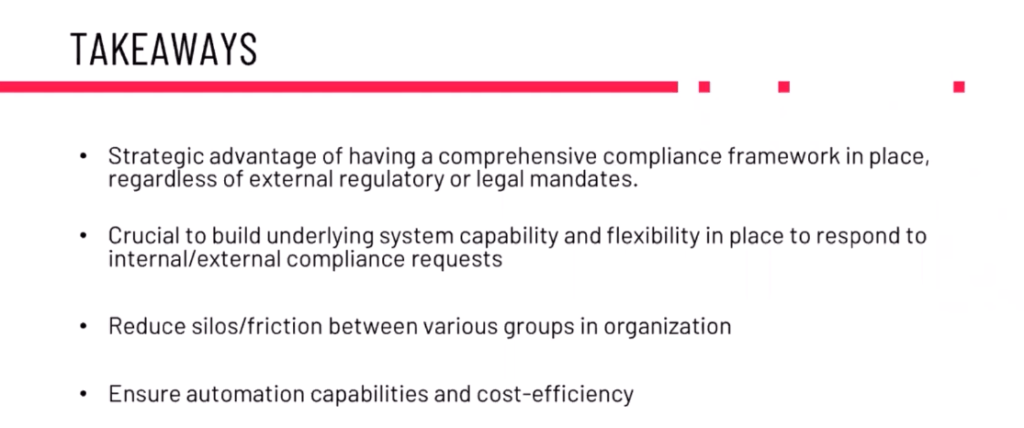Proactive Compliance via Confluence and Comala Workflows
Compliance is a term that brings varying reactions from different people. Most everyone recognizes the value and importance of regulations governing certain activities, such as the quality of the ingredients that make it into our food, or the methods used to protect our privacy. We appreciate compliance measures because they protect us.
But, for those working in heavily regulated industries — as much as they understand and appreciate the value too — the day-to-day reality of maintaining compliance can be a logistical nightmare: Layered processes, multiple rounds of inspection and approval, and tremendous amounts of documentation coupled with the ever-present possibility of penalties if a mistake is made.
That’s why we’re interested in any tool or methodology that can help companies remain compliant while reducing their workload and stress level. Comala Workflows is just such a tool. It’s a document management plugin for Confluence, the robust collaboration software that makes up a key pillar in the Atlassian stack. We recently sat down with Comalatech COO, Simon Gatto, to discuss the ins and outs of smart document management. We encourage you to watch the full presentation when you have 40 minutes to invest, but here are a few key takeaways the live audience appreciated:
Who is impacted by compliance regulations around documentation?
When we think about regulatory compliance, we immediately think about pharmaceutical companies who need to obtain and maintain a seal of approval from the Food and Drug Administration (FDA), or banks that are obligated to protect their customers’ financial information. And those are good examples of highly-regulated industries where compliance is public-facing and non-compliance makes the headlines. Other examples include healthcare facilities, insurance companies, medical device manufacturers, and public utilities.
Interestingly, though, compliance regulations are not all government-mandated, and they’re not all commonly known or understood by the average layperson outside specific roles. There are many other industries and disciplines that may not face the same intense level of scrutiny as drug companies or financial institutions, but which nonetheless do need to prioritize compliance to internal and external regulations around their documentation. And, there are many more industries that don’t necessarily have any official rules to comply with, but whose businesses can benefit from increased control and organization around their documentation practices, version control, automated document deprecation, and more.
In all these cases, Comala Workflows provides scalable layers of structure on top of Confluence’s out-of-the-box documentation and collaboration functionality, providing whatever layer of document management and subsequent reporting is necessary to meet these companies’ needs.
“Companies who have to produce this documentation know it has to be done in such a way that the quality and how it’s being produced is being managed properly. So it’s becoming more common to find a formal knowledge management team and we’ll find those in almost any organization.”
– Simon Gatto, COO of Comalatech.
Where do documentation management, compliance, and agility intersect?
At Cprime, we’re obviously interested in anything that’s going to help our customers — or businesses in general — run and scale in a more agile way. While Agile (with a capital “A”) is more about culture, mindset, and workflow best practices, there has to be a fair amount of documentation involved in order to maintain order and accountability. There are additional documentation requirements within every organization beyond the artifacts prescribed by Agile, and, as noted above, regulated industries need to be able to produce audit-worthy proof of how that documentation has been produced.
It’s easy to see how all those documentation requirements can create bottlenecks in otherwise agile workflows, especially in organizations where non-compliance can be detrimental, even catastrophic for the company. Even for companies with no legal or regulatory mandates, the sheer volume of needed internal and external documentation, left unmanaged, can create knowledge silos, confusion, and friction between teams, especially as remote work continues to explode around the world.
So, a tool that streamlines documentation management and helps automate processes without slowing down business activity can only improve a company’s performance and boost the value of the products they create and services they offer.
“Whether or not there’s compliance officers and legal groups, making sure you were towing the line for your particular industry there. there’s a lot of uplift to get from having a framework like this in place from simply making sure that if everybody is going fast to go fast with the right information and all the way.” – Dan Frost, Director of Partnerships, Cprime
There’s far more good stuff where that came from.




